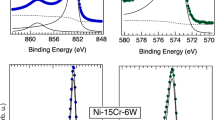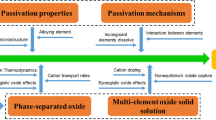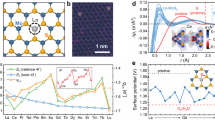Abstract
MOLYBDENUM disilicide is of particular importance in the field of high-temperature materials, both as a structural material in its own right and as an oxidation resistant coating for molybdenum alloys. Apart from having a high melting point of 2,000° C (ref. 1) and good oxidation resistance up to 1,700° C, MoSi2 possesses high-temperature mechanical properties which make it adequate for many applications under static high-temperature oxidizing conditions2.
This is a preview of subscription content, access via your institution
Access options
Subscribe to this journal
Receive 51 print issues and online access
$199.00 per year
only $3.90 per issue
Buy this article
- Purchase on Springer Link
- Instant access to full article PDF
Prices may be subject to local taxes which are calculated during checkout
Similar content being viewed by others
References
Cherniack, G. B., and Elliott, A. G., J. Amer. Ceramic Soc., 47, 136 (1964).
Climax Molybdenum Co. Data Bull. Cdb, 6 (1956).
Powell, C. F., Campbell, I. E., and Gonser, B. W., Vapour Plating (Wiley, New York, 1955).
Searcy, A. W., and Tharp, A. G., J. Phys. Chem., 64, 1539 (1960).
Beidler, E. A., Powell, C. F., and Campbell, I. E., J. Electrochem. Soc., 98, 21 (1951).
Author information
Authors and Affiliations
Rights and permissions
About this article
Cite this article
TODD, G., PARRY, E. Role of Silica in the Oxidation Resistance of Molybdenum Disilicide. Nature 203, 967–969 (1964). https://doi.org/10.1038/203967b0
Published:
Issue Date:
DOI: https://doi.org/10.1038/203967b0
Comments
By submitting a comment you agree to abide by our Terms and Community Guidelines. If you find something abusive or that does not comply with our terms or guidelines please flag it as inappropriate.



